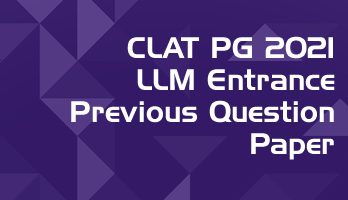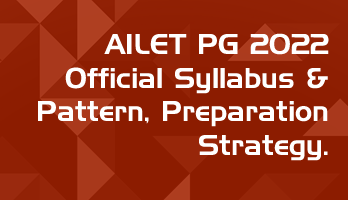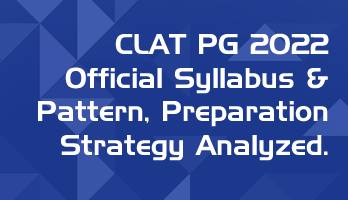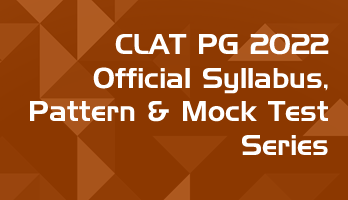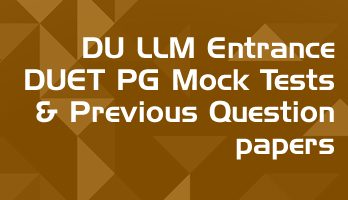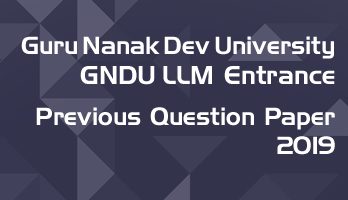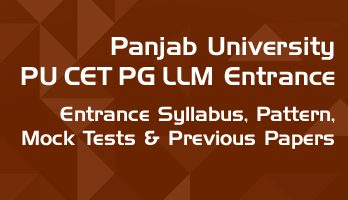In this article, we have provided the details of the subjects / topics that are covered in the BHU LLM PET 2025 syllabus. The LawMint mock test database for BHU LLM PET is designed around these topics; in additional to other questions from the standard LLB syllabus.
his post is in continuation of our previous article about the BHU LLM Entrance – PET, which covers all the essential details about admissions to the three LLM programs offered by the Banaras Hindu University. You can read the details about the Eligibility criteria, PE question paper pattern, Selection process, Cut-off marks and Syllabus overview here.
List of BHU LLM PET 2025 Syllabus Subjects
- Jurisprudence
- Constitutional Law
- Law of Contracts
- Law of Torts
- Law of Crimes
- Environmental Law
- Public International Law
- Indian Evidence Act
- Family law – Hindu Law and Muslim Law
Details of the BHU LLM Entrance PET 2025 Syllabus
Jurisprudence
Introduction
(a) Definition, Nature and Scope of Jurisprudence
(b) Importance of the Study of Jurisprudence
Analytical School
(a) Analytical Positivism
(b) Imperative Theory : John Austin
Historical School
(a) Frederick Karl Von Savigny
(b) Sir Henry Sumner Maine
Natural Law School
(a) Classical Natural Law
(b) Revival of Natural Law : Rudolf Stammler
Sociological School
(a) Background and Characteristics
(b) Roscoe Pound
American Realist School
Legal Person
(a) Nature and Concept
(b) Theories of Legal Personality
Legal Rights
(a) Definition, Basis and Characteristics
(b) Kinds of Legal Rights
Possession and Ownership :
(a) Possession in Fact and Possession in Law
(b) Relation between Possession and Ownership
Liability
(a) Theory of Remedial Liability
(b) Theory of Penal Liability
Law and Morality
(a) Relation between Law and Morals
(b) Legal Enforcement of Morality
Law and Justice
(a) Concept of Justice
(b) Theories of Justice
Constitutional Law
(1) Characteristics of the Indian Constitutions. Focus on (A) Federal Structure and (B) Form of the Government.
(2) Union Parliament : Organization, Procedure regarding Enactment of Legislation, Parliamentary Privileges.
(3) Union Executive : The President, his Powers and Position including Ordinance Making Power.
(4) Prime Minister and the Cabinet. Is the Prime Minister Real Head?
(5) Distribution of Legislative Powers between Union and the States. Territorial and Topical Distribution of Powers. Power of Parliament to Legislate on State Matters. Doctrine of Territorial Nexus. Doctrine of Pith and Substance, Doctrine of Colourable Legislation.
(6) Emergency Provisions with Special References to Proclamation of Emergency and President’s Rule.
(7) Fundamental Rights – General : Scheme of Fundamental Rights, Who can Claim Fundamental Rights : Against whom Fundamental Rights are Available? Suspension of Fundamental Rights.
(8) Fundamental Rights – Specific : Special Emphasis shall be Placed on the Following Rights :
(a) Right to Equality (Articles 14 to 18)
(b) Right to Freedom of Speech and Expression (Article 19(1)(a))
(c) Right to Life and Personal Liberty (Article 21)
(d) Right to Freedom of Religion (Articles 25 to 28)
(e) Right to Constitutional Remedies (Article 32)
(9) Directive Principles of State Policy. Their Importance and Relationship with Fundamental Rights.
(10) Fundamental Duties
(11) Union Judiciary : Supreme Court of India. Composition and Jurisdiction
(12) Amendment of the Constitution. Power and Procedure; Basic Structure of the Constitution
Law of Contracts
(1) Purpose, Evolution and Scope of Law of Contracts
(2) Proposal and Promise Including Communication of Proposal, Acceptance and Communication of the Revocation of Proposal and Acceptance.
(3) Consideration and Doctrine of Privity of Contract.
(4) Lawful Object and Consideration.
(5) Capacity to Contract : Minors, Persons of Unsound Mind and Others Disqualified by Law : Nature and Effects of Minor’s Agreements ; Doctrine of Restitution.
(6) Consent and Free Consent.
(7) Standard Form of Contracts
(8) Agreements Declared Void Under the Contract Act.
(9) Contingent Contracts
(10) Law Relating to Certain Relations Resembling those Created by Contracts, viz., Quasi-Contracts.
I. Discharge of Contract :
(1) Discharge by Performance
(2) Discharge by Breach Including Anticipatory Breach
(3) Discharge by Agreement
(4) Discharge by Impossibility of Performance with Particular Reference to English Law Doctrine of Frustration
II. Breach of Contract and Remedies
(1) Remedies Available Under Indian Contract Act, 1872 Compensation : Meaning Nature and Kinds; Remoteness of Damage; Measure of Damages; Contracts Containing Stipulation by Way of Penalty.
(2) Remedies Available Under Specific Relief Act, 1963
(i) General Principles of Granting Specific Relief
(ii) Recovery of Possession of Immovable and Movable Property
(iii) Specific Performance of Contracts Including Contracts which cannot be Specifically Enforced
(iv) Rectification and Cancellation of Instruments
(v) Recission of Contracts
(vi) Injunctive Relief
(vii) Declaratory Decrees
I. Contract of Indemnity, Contract of Guarantee, Contract of Bailment and pledge.
(1) Nature and Definition of Contract of Indemnity : Extent of Indemnifier’s Liability.
(2) Nature and Definition of Contract of Guarantee.
(3) Rights, Liabilities and Discharge of Surety.
(4) Meaning and Definition of Contract of Bailment
(5) Rights and Duties of Bailor and Bailee
(6) Meaning of Bailment, of Pledge; Pledge by Persons Other than the Owner.
II. Contract of Agency
(1) Nature of Contract of Agency
(2) Modes of Creation of Agency
(3) Modes of Termination of Agency
(4) Rights and Duties of Principal and Agent
(5) Rights and Liabilities of Undisclosed Principal
(6) Personal Liability of an Agent
I. Contract of Partnership :
(1) Nature and Definition of Contract of Partnership
(2) Non-Partnership Interests
(3) Formation of Partnership and Partner by Holding Out
(4) Minor and Partnership Firm
(5) Registration of Firms and Effects of Non-Registration
(6) Dissolution of Firms
II. Contract of sale of Goods and Hire-Purchase :
(1) Nature and Definition of Contract of Sale of Goods
(2) Conditions and Warranties
(3) Rule of Caveat Emptor
(4) Rule of Transfer of Title
(5) Definition and Rights of an Unpaid Seller
(6) Hire-Purchase Agreement its Meaning, Form and Contents; Distinction between Sale and Hire-Purchase Agreement.
Law of Torts
(1) Evolution, Definition, Nature and Scope of Torts.
(a) Its Development by Courts in England and India.
(b) A Wrongful Act – Legal Damage
(i) Damnum Sine Injuria
(ii) Injuria Sine Damno
(c) Joint and Several Tort Feasors
(d) Tort distinguished from Crime and Contract
(2) General Defences in Torts : With Special Reference to Volenti Non Fit Injuria, Act of God, Inevitable Accident, Statutory Authority.
(3) Vicarious Liability with Special Reference to Master’s Liability for Acts of Servant.
(4) Absolute and Strict Liability .
(5) Torts based on Intentional Wrong-Doing.
(a) Affecting Person – Assault, Battery and False Imprisonment.
(b) Malicious Prosecution
(c) Affecting Immovable Property – Trespass to Land.
(6) Torts based on Intentional and Negligent Wrong-Doing
(a) Nervous Shock
(b) Nuisance
(c) Defamation
(7) Remoteness of Damage
Law of Crimes
With special reference to the Indian Penal Code, 1860 : Historical background of criminal law in India; Concept of crime; Element of crime-external and internal; Motive; Concept of Strict Liability; General Exceptions viz. Mistake, Superior order, Action in pursuance of legal obligation, accident, necessity, young age, unsoundness of mind, drunkenness, consent compulsion, trifling act, communication made in good faith; Right of Private Defence; Joint and constructive liability; Preliminary offences viz. Abetment, conspiracy and attempt.
(1) Offences Affecting Human Body, viz. Culpable Homicide, Murder, Homicide by Rash and Negligent Act, Hurt and Grievous Hurt; Wrongful Restraint and Wrongful Confinement; Criminal Force; Assault; Outraging the Modesty of Woman; Kidnapping and Abduction.
(2) Offences Against Property, viz. Theft; Extortion; Robbery; Dacoity; Criminal Misappropriation; Criminal Breach of Trust; Cheating; Mischief; Criminal Trespass.
(3) Offences Against Document viz. Forgery.
(4) Offences Against State and Public Tranquility viz. Sedition; Unlawful Assembly; Rioting and Affray.
(5) Offences Against Marriage viz. Bigamy and Adultery.
Environmental Law
(1) General Background
(a) Problems of Environmental Pollution and Protection
(b) History of Indian Environmental Laws
(c) Importance and Scope of Environmental Laws
(d) International Perspective of Environmental Law
(2) Constitutional Aspects :
(a) Distribution of Legislative Power
(b) Directive Principles of State Policy
(c) Fundamental Duties
(d) Fundamental Rights
(3) Select Legal Controls – The Water (Prevention and Control of Pollution) Act, 1974 and the Air
(Prevention and Control of Pollution) Act, 1981.
(a) Salient Features of the Acts
(b) Definitions
(c) Authorities – Composition, Power and Function
(d) Mechanism to Control the Pollution
(e) Sanctions
(4) Judicial Justice – Select Case Laws :
(a) M.C. Mehta vs. Union of India (AIR 1987 SC 965, 982, 1086)
(b) M.C. Mehta vs. Union of India (AIR 1988 SC 1037, 1115)
(c) Municipal Council, Ratlam vs. Vardhichand and Others (AIR 1980 SC 1622)
I. Environment (Protection) Act, 1986 :
(1) Definition of ‘Environment’
(2) Salient Features of the Act
(3) Authorities – Composition, Powers, Functions
(4) Mechanism to Control Environmental Pollution
(5) Sanctions
II. Control of Noise Pollution :
(6) Legal Control
(7) Judicial Control
III. Emerging Principles : Historical Background and Judicial Approach in India
(8) Polluter Pays Principle
(9) Precautionary Principle
(10) Public Trust Doctrine
(11) Sustainable Development
IV. Environmental Dispute and Grievance Settlement Mechanism :
(12) National Environment Tribunal Act, 1995-Powers, Functions and Jurisdiction of the National Environmental Tribunal
(13) National Environment Appellate Authority Act, 1997- Powers, Functions and Jurisdiction of the National Environment Appellate Authority.
Public International Law
(1) Theoretical Foundation of International Law :
(a) Definition
(b) Nature and Scope
(c) Schools of International Law
(2) Sources of International Law :
(a) Custom
(b) International Conventions
(c) General Principles of Law
(d) Judicial Decisions and Juristic Works
(3) Relations between International Law and Municipal Law
(a) Theories of Relationship
(b) Indian and British Practices
(4) Recognition in International Law :
(a) Concept, kind and Theories
(b) Legal Consequence of Recognition
(5) State Territory :
(a) Law of the Sea
(b) Air space
(6) Jurisdiction :
(a) Territorial Jurisdiction
(b) Extraterritorial Jurisdiction
(7) Asylum and Extradition
(8) Pacific Settlement of International Disputes
Indian Evidence Act
(1) Fact In-Issue; Relevant Facts; Document
(2) Evidence : Proved; Disproved; Not proved;
(3) May Presume, Shall Presume, and Conclusive Proof
(4) Circumstantial Evidence
(5) Relevancy and Admissibility; Res Gestae (Sections 6 to 13)
(6) Admission ; Confession (Sections 17 to 31)
(7) Dying Declaration (Section 32(1))
(8) Relevancy of Judgments (Sections 40 to 44)
(9) Opinion of Experts; Opinion of Third Persons (Sections 45 to 47)
(10) Conduct and Character of Parties (Sections 52 to55)
(11) Judicial Notice (Sections 56 to 57)
(12) Estoppel (Sections 115 to 116)
I. Means of Proof : Oral Evidence; Documents – Public Document, Private Document, Primary and Secondary Evidence; (Sections 59 to 65 and 74 to 78); Exclusion of Oral by Documentary Evidence (Sections 91 to 92)
II. Burden of Proof (Sections 101 to 106)
Witnesses : Competency and Compellability of Witnesses; Examination of Witnesses; Privileges : State Privilege and Private Privilege (Sections 118 to 155).
Family & Personal Laws
Hindu Law
The course shall comprise of the following :
(1) Sources of Hindu Law
(2) Schools and Sub-Schools of Hindu Law
(3) Marriage : Essentials of a Valid Marriage, Void and Voidable Marriage
(4) Matrimonial Relief
Concept and Grounds of Various Matrimonial Reliefs viz.
– Restitution of Conjugal Rights
– Judicial Separation
– Nullity of Marriage
– Divorce
(5) Legitimacy – Legal Status of Children Born of Void and Voidable Marriage.
(6) Adoption
(7) Hindu Minority and Guardianship Act, 1956
(8) Law of Maintenance – Hindu Adoption and Maintenance Act, 1956.
(9) Joint Hindu Family (Mitakshara and Dayabhaga)
(a) Coparcenary – Its Formation and Incidents
(b) Kinds of Property – Obstructed and Un-obstructed Heritage, Coparcenary Property and Separate Property
(c) Rights and Duties of Karta
(10) Alienation of Coparcenary Property, Alienation of Undivided Coparcenary Interest
(11) Law of Debts : Liability to Pay Debts, Pious Obligation Theory – Avyavaharika Debts, Antecedent Debts
(12) Law of Partition and Re-Union :
Nature of Partition
Partition how Effected and Reopened
Subject Matter of Partition
Re-union
(5) Law of Succession :
Devolution of Coparcenary Interests
General Rules of Succession in the Case of Male
General Rules of Succession in the Case of Female
Other General Rules of Succession
Disqualifications Relating to Succession
Testamentary Succession Under Section 30 of Hindu Succession Act, 1956.
Muslim Law
(1) Introduction : Who is Muslim, Conversion, Apostasy.
(2) Sources of Muslim Law
(3) Schools of Muslim Law
(4) Marriage : Definition, Nature, Capacity, Classification and Legal Effect of Marriage.
(5) Dower
(6) Dissolution of Marriage under Muslim Law : (Divorce) Talaq, Ila, Khula, Mubarrat, Talaq-eTafweed, Lian, Faskh etc.
(7) Dissolution of Muslim Marriage Act, 1939.
(8) Maintenance of Wives with Special Reference to Section 125 Cr. P.C.
(9) Shah Banu Case and the Ensuing Legislation.
(10) Parentage and Legitimacy : Acknowledgement of Legitimacy. Brief Study of Section 112 of the Evidence Act.
(11) Will
(12) Gift
(13) Hiba-Marz-ul Maut
(14) Law of Pre-emption
(15) Inheritance under Sunni Law
(16) Inheritance under Shia Law
(17) Indian Divorce Act, 1869 : Dissolution of Marriage and custody of Children.
(18) Indian Succession Act, 1925 : Intestate Succession.
Note: The BHU LLM PET Syllabus given in this article is for general information only. Reconfirm the syllabus and details by referring to the official exam notification, prospectus and brochure published on http://bhuonline.in or http://www.bhu.ac.in
Refer to this article for answers to Frequently Asked Questions about the BHU LLM PET : https://lawmint.com/llm-entrance/bhu-pet-llm-frequently-asked-questions/
BHU LLM PET Entrance Test Previous Year Papers & Old Question Papers
All the previous question papers are available for download in PDF format through this article : https://lawmint.com/llm-entrance/bhu-llm-entrance-pet-previous-question-papers-pdf/



